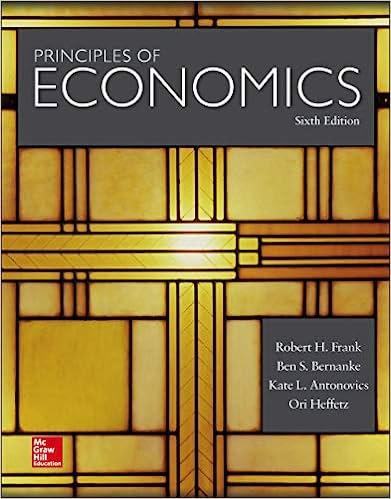Question
Suppose that we have a two-period economy with a representative consumer whose utility is given by u(c; l) = log(c) in each period. The consumer
Suppose that we have a two-period economy with a representative consumer
whose utility is given by u(c; l) = log(c) in each period. The consumer is
endowed with capital K in period 1 and sells it to the rm for a price pk in the
rst period. They invest in second period capital K0 in period 1 and likewise sell
it for the price p0
k in the second period. They are endowed with h units of labor
to split between leisure and labor as they see t. The government taxes capital
income in each period and uses it to nance (G;G0) of goods consumption.
Consumers and the government both have access to the market interest rate r.
Suppose that = 1. Then the consumer's rst period budget constraint is given
by:
c + K0 + s = w(h l) + pkK(1 )
The rm has standard Cobb-Douglas production and purchases capital and
labor from the consumer. The rst period resource constraint is:
c + G + K0 = z(Kd)(Nd)1
Please complete the following:
i) Derive the consumer's lifetime budget constraint.
ii) Dene a competitive equilibrium in this environment.
iii) Solve for a series of equations summarizing the CE.
iv) What is the Euler Equation from the CE?
v) What is the social planner's problem? Find the associated Euler Equation
and compare it to (iv). What does this suggest about the optimality of
the CE?
vi) From the planner's perspective, why would a labor income tax be preferred
to a capital income tax in this environment?
3
Step by Step Solution
There are 3 Steps involved in it
Step: 1

Get Instant Access to Expert-Tailored Solutions
See step-by-step solutions with expert insights and AI powered tools for academic success
Step: 2

Step: 3

Ace Your Homework with AI
Get the answers you need in no time with our AI-driven, step-by-step assistance
Get Started


